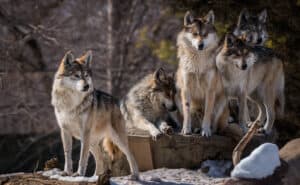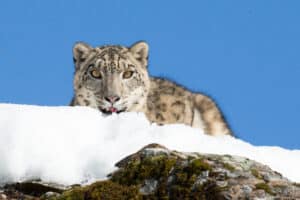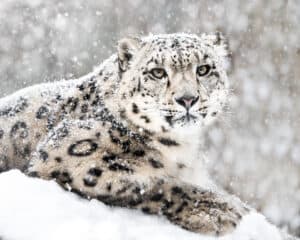Leopards are typically portrayed as fearsome predators found in warm regions such as Kenya, Tanzania, and Southern Asia. What about the snow leopard, though? The snow leopard is distinct from other leopard species in several respects. So, without further ado, here are 10 incredible snow leopard facts.
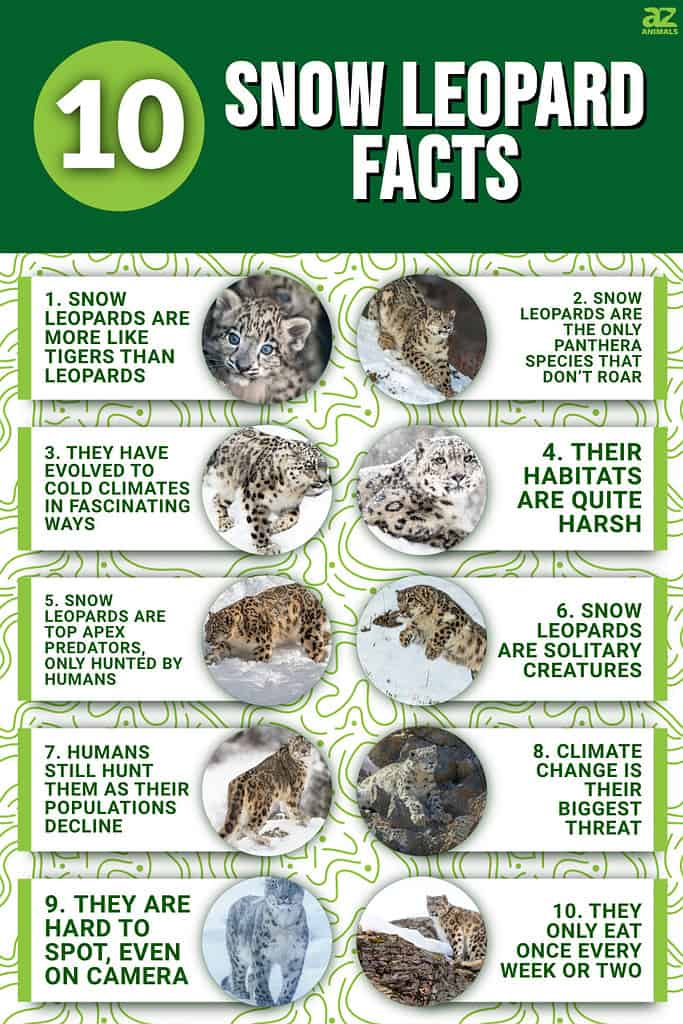
1. Snow Leopards Are More Like Tigers Than Leopards
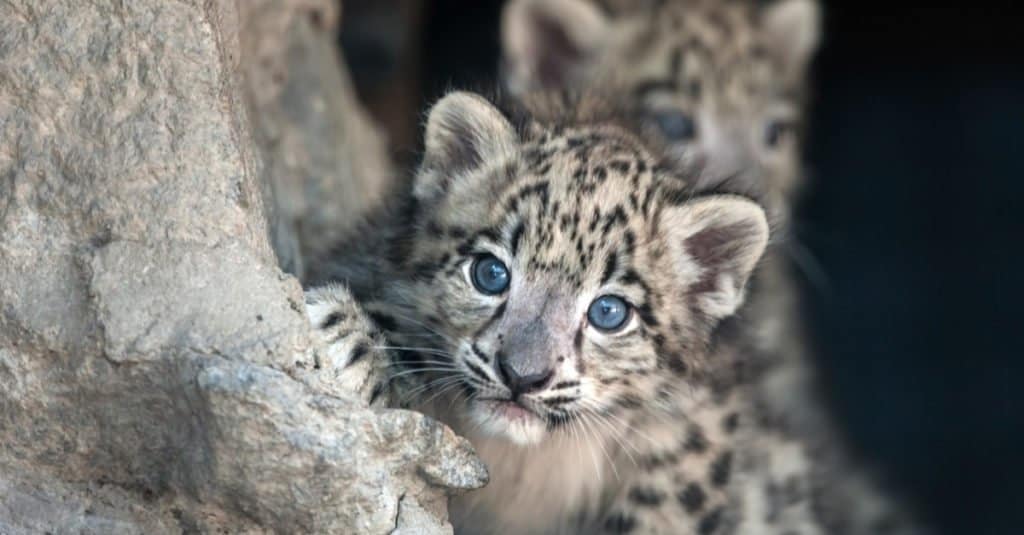
Snow leopards are more closely related to tigers than leopards.
©Kwadrat/Shutterstock.com
The snow leopard (Panthera uncia) isn’t even a leopard. In terms of genetics, snow leopards are more closely related to tigers than they are to leopards, despite their eerie resemblance. The truth is that no other big cat comes close to matching them in terms of diversity and uniqueness.
2. Snow Leopards Are the Only Panthera Species That Doesn’t Roar
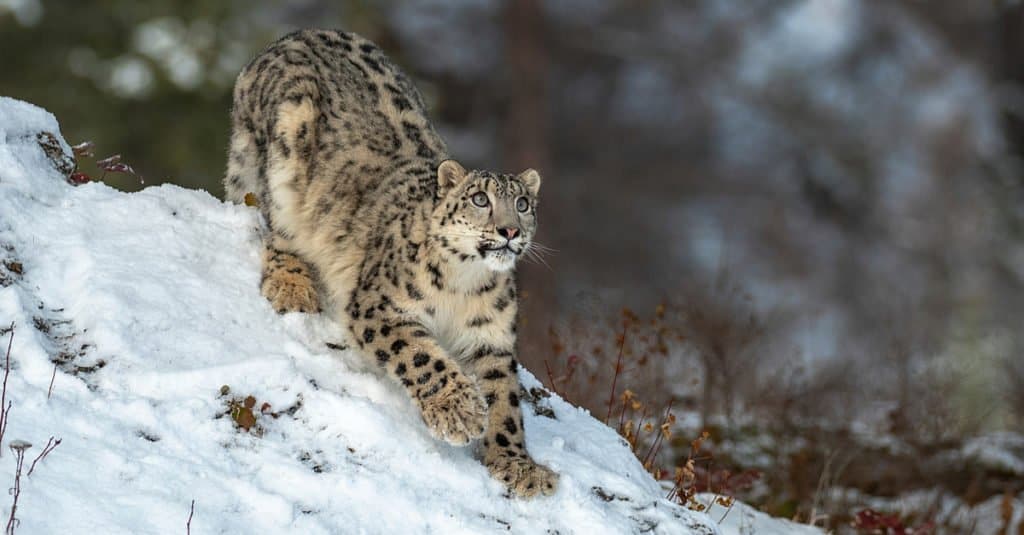
The snow leopard cannot roar.
©Chris Desborough/Shutterstock.com
The snow leopard is unique among large Panthera species in that it lacks the ability to produce a roar. However, it can be heard making noises like a growl, a chuff, a hiss, and even a mew!
3. They Have Adapted to Cold Climates in Fascinating Ways
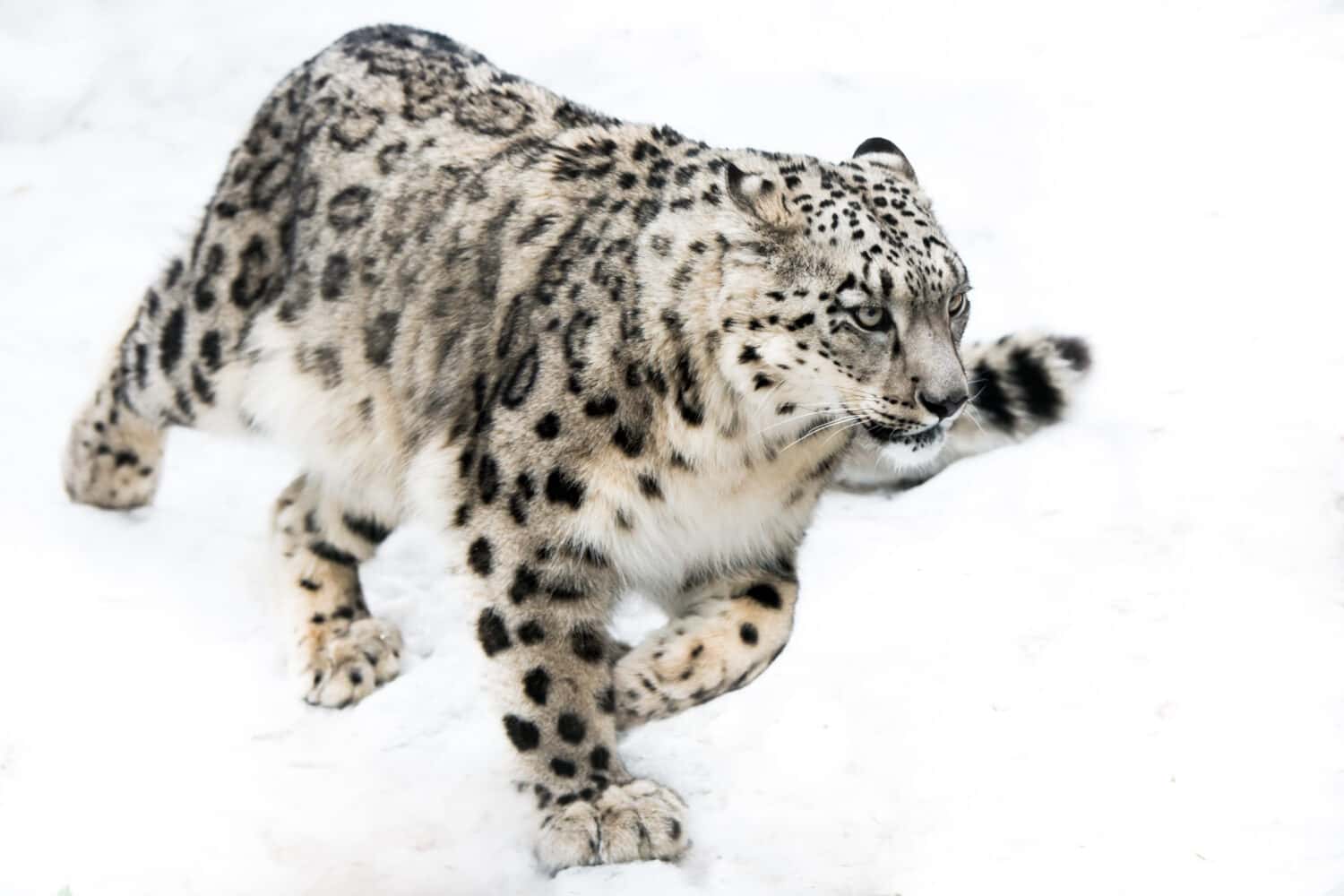
Snow leopards have thick fur and big snowshoe-like paws to help them thrive in snowy conditions.
©Abeselom Zerit/Shutterstock.com
Snow leopards have adapted quite well to their cold environment. They have short legs and rounded ears to avoid heat loss. Their wide nasal canals heat air before it reaches their lungs. Snow leopards also have thick, five-inch fur to keep warm in the snow! This fur covers their huge paws, which act like snowshoes to help them stalk prey in the snow. Their thick coat is icy-colored with black rosettes that help provide camouflage.
4. Their Habitats Are Quite Harsh
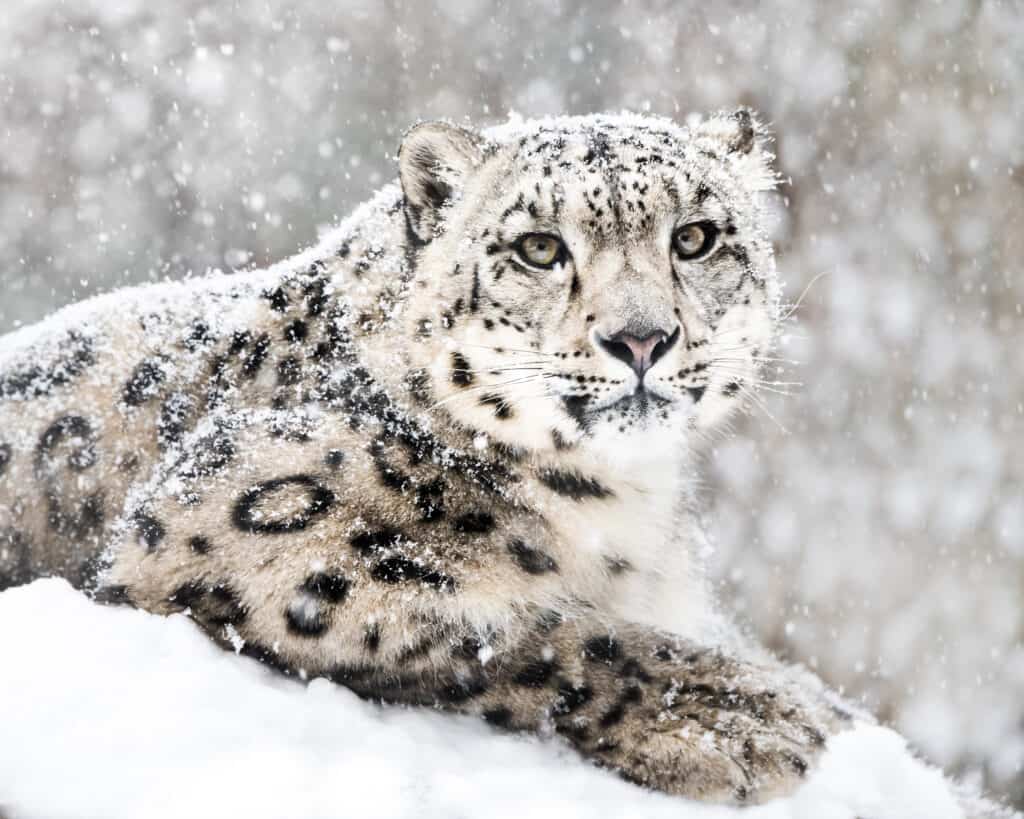
Snow leopards reside in a harsh mountain environment.
©Abeselom Zerit/Shutterstock.com
Snow leopards only reside in the steep, rocky mountains of Central Asia, which includes the Himalayas. They prefer dry, treeless, sparsely vegetated slopes. In the summer, they travel 10,000 to 20,000 feet above tree lines. They may descend 4,000 feet in winter.
5. Snow Leopards Are Top Apex Predators, Only Hunted by Humans
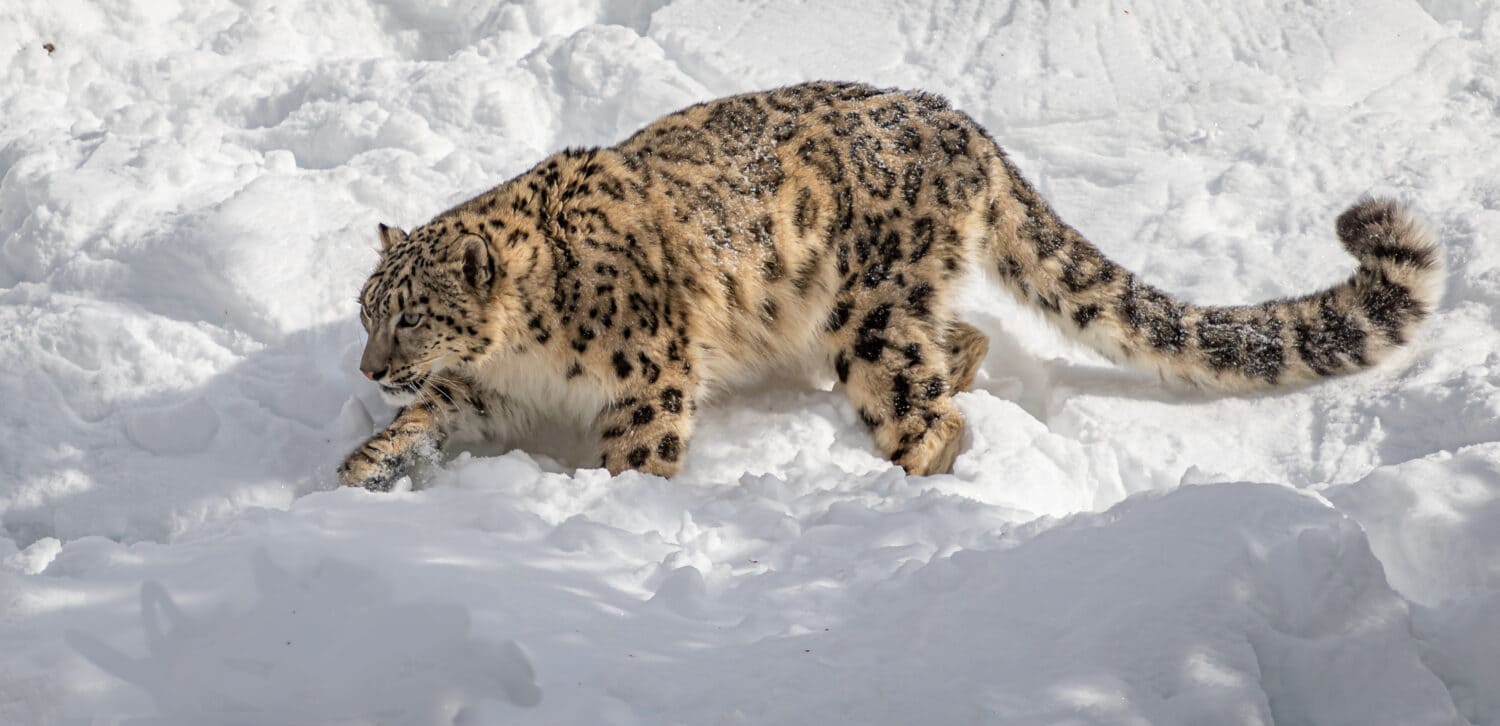
Snow leopards have no predators other than humans.
©Holly S Cannon/Shutterstock.com
There is a significant role for snow leopards in the ecosystem. They serve as an indicator of a healthy ecology because they are targeted by no other predators, outside of humans. They also control the population of their prey, which is primarily herbivorous but can also include smaller predators.
The little snow leopard has never had a reputation for being territorial over its prey. It is prone to back down and lose a meal if confronted by other predators, including humans.
6. Snow Leopards Are Solitary Creatures
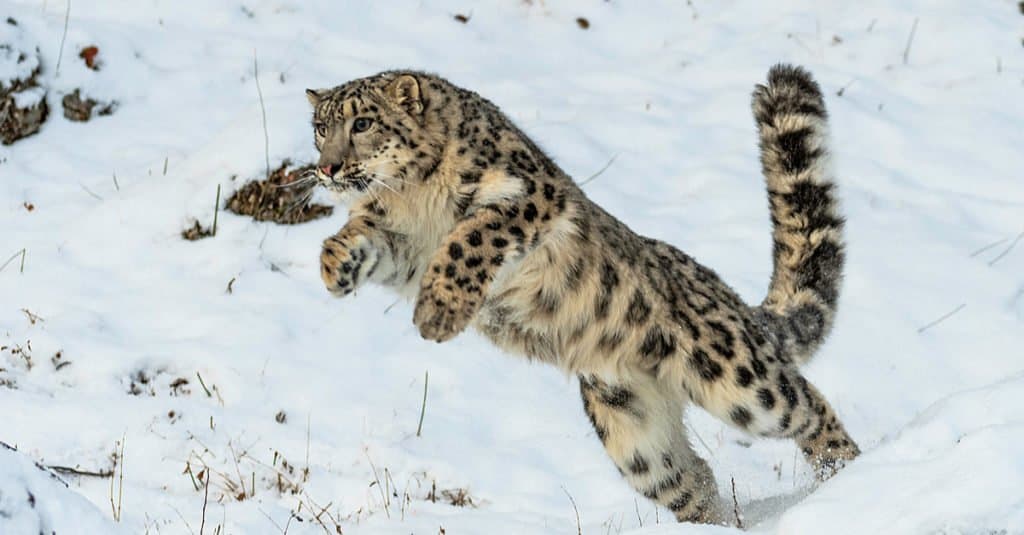
Snow leopards live and work alone.
©Chris Desborough/Shutterstock.com
Since snow leopards are so solitary, there is no term for referring to a group of them. All adult males are introverts who rarely interact with others outside of the mating season. Mothers might spend up to 22 months caring for their young before they are off on their own.
The only time you’re likely to see a pair of snow leopards out hunting is during mating season. Their home ranges can be as small as 20 square miles in areas with an abundance of prey and as large as 400 square miles in areas where food is scarce.
7. Humans Still Hunt Them, Even as Populations Decline
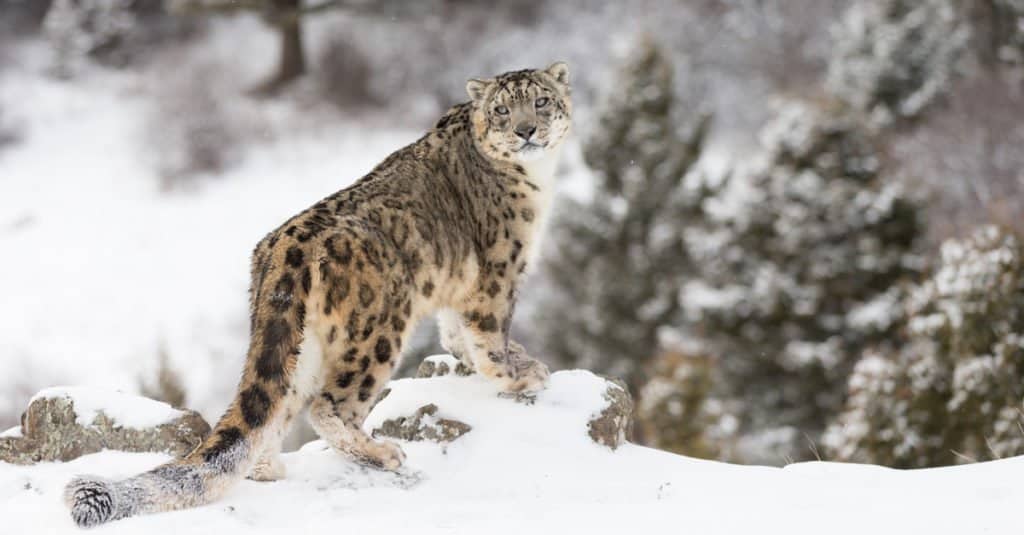
Humans are the greatest predators of snow leopards.
©Dennis W Donohue/Shutterstock.com
Snow leopards are also vulnerable to poaching since their luxurious coats are much sought after in the illegal wildlife trade. Their bones are also utilized in traditional Asian medicine as a substitute for tiger bones. The poaching of snow leopards is still a major threat to their survival, with hundreds of cats reportedly being murdered every year for their parts.
8. Climate Change Is Their Biggest Threat
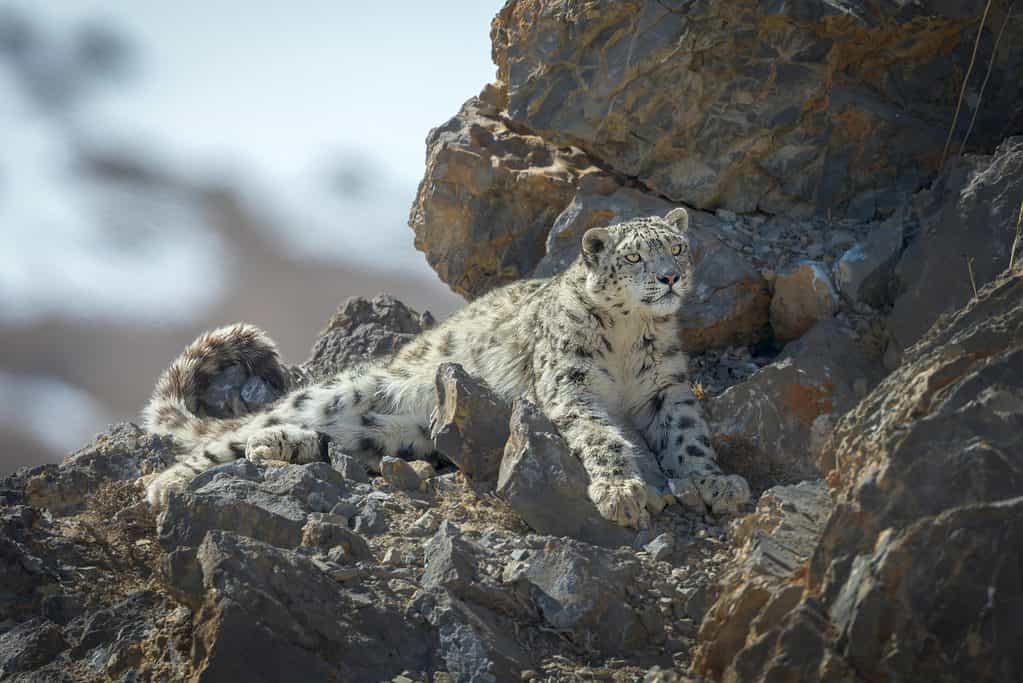
Snow leopards are threatened by global warming.
©Sagephotography.in/Shutterstock.com
For the snow leopard, global warming may be their greatest long-term danger. Twenty percent of the population has been wiped out in the past ten years due to habitat destruction and poaching. However, climate change threatens to modify the terrain and weather of the snow leopard habitat, posing problems for the animal’s prey. This of course affects the snow leopard’s ability to eat and survive.
9. They are Hard to Spot, Even on Camera
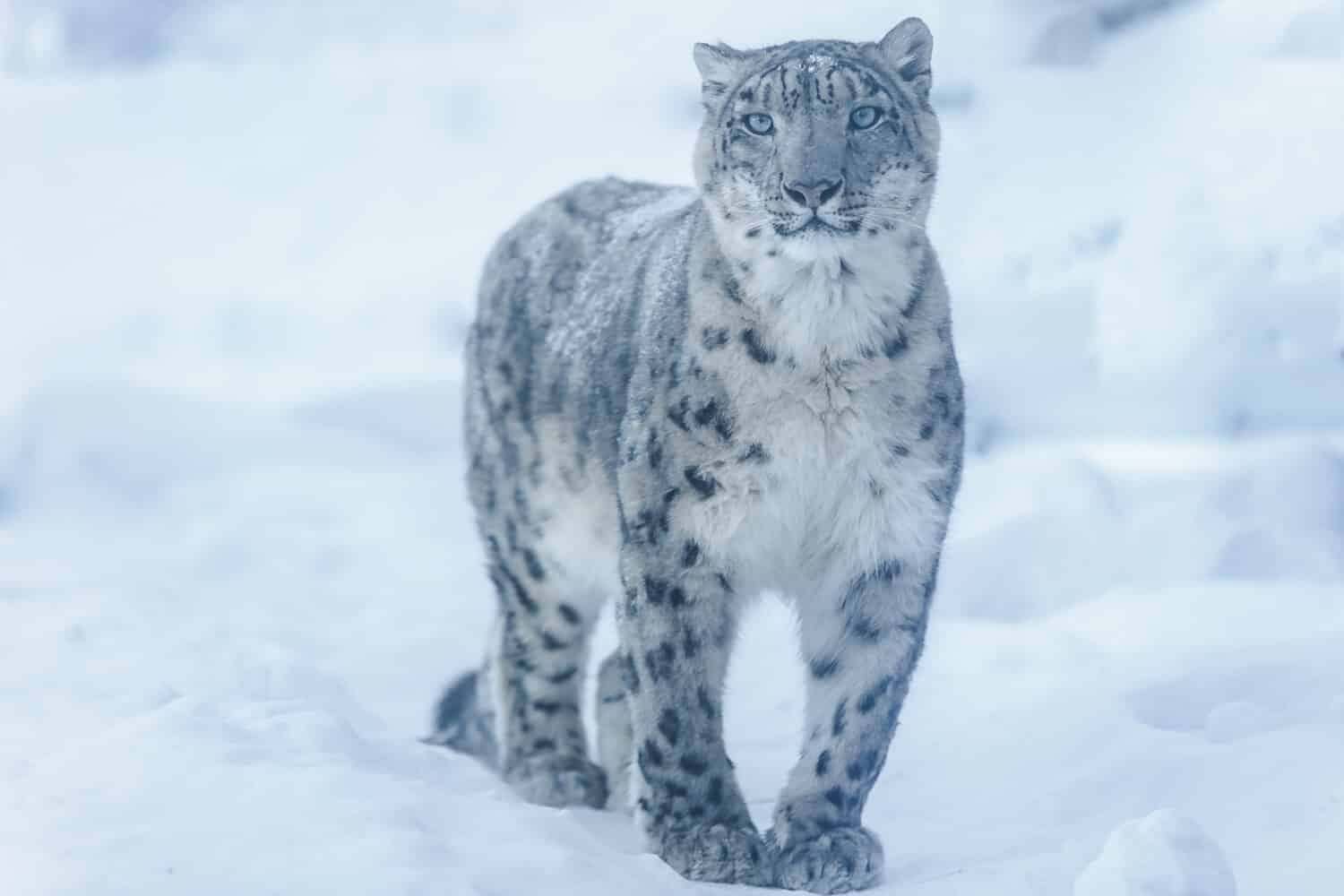
Elusive snow leopards are known as “ghosts of the mountains.”
©Aleksandr Denisyuk/Shutterstock.com
Snow leopards, also known as “ghosts of the mountains,” are notoriously difficult to notice, thanks in part to their excellent camouflage and their preference for isolated habitats. However, through its Natural Partnerships Program, the Snow Leopard Trust engages zoos from all around the world to help protect the most imperiled snow leopard populations.
10. They Only Eat Once a Week
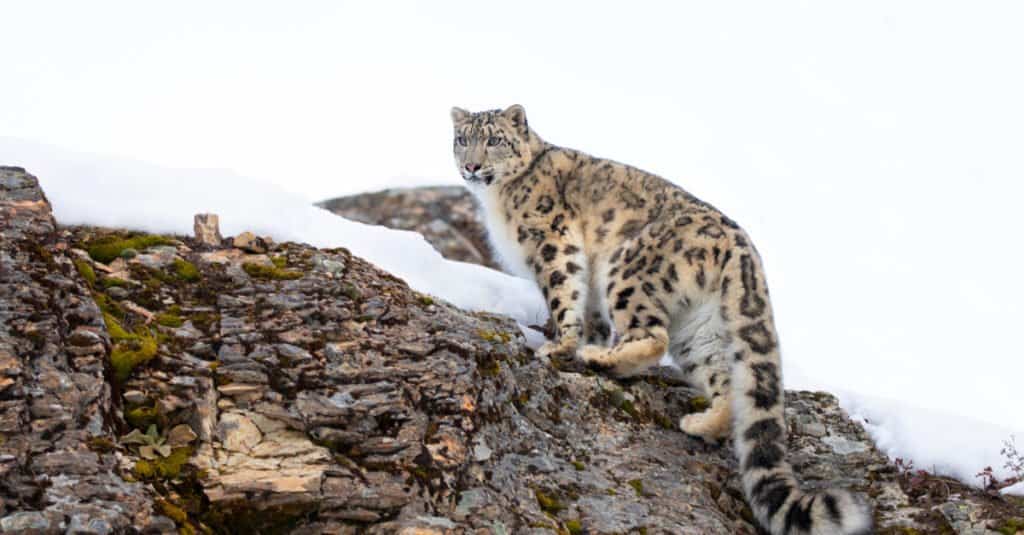
Snow leopards are excellent at looking for prey.
©Jim Cumming/Shutterstock.com
On average, a snow leopard will hunt a large animal once every ten days. As a result of their slow eating pace, snow leopards often take up to four days to completely digest their meat. While guarding its victim against birds of prey, the snow leopard will dine at the scene of the crime every few hours.
They are also flexible predators that will switch to whatever food source is most readily accessible. In contrast to other big cats, this behavior is unique to this species. As huge carnivores, mountain sheep, ibexes, and goats are among the snow leopard’s favorite meals. Animals that are three times the weight of these cats are no match for them. Under duress, they will resort to preying on rodents such as rabbits, voles, and marmots. They are also willing to resort to bird hunting, if necessary.
The photo featured at the top of this post is © iStock.com/RobFranklin
Thank you for reading! Have some feedback for us? Contact the AZ Animals editorial team.



